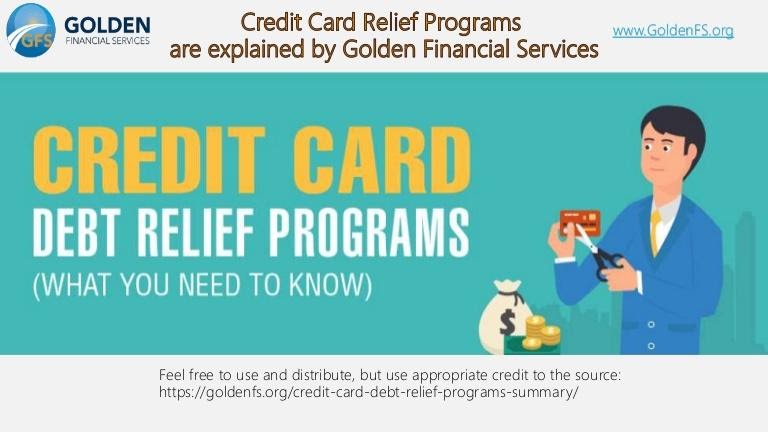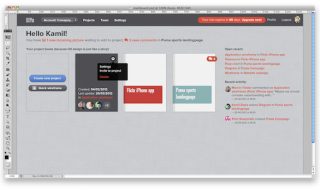
Credit card debt relief company CEO, Paul J Paquin, reveals the truth and shares tips about getting out of debt in 2020, following the days after COVID-19 struck the United States. Although this plague is still destroying millions of lives across the country and is far from over, when it comes to your financial situation it’s time to get things back on track.
Struggling to pay off over $6,194 in total credit cards? Debt relief options may be needed because your credit card balances are higher than the average. You may not need a program, but you do need some type of credit card debt relief. A recent article on CNBC stated, “On average, Americans carry $6,194 in credit card debt, according to the 2019 Experian Consumer Credit Review.” Source

So, if your debt is above that national average, the following information specifically applies to you.
Different strokes for different folks:
A person also needs to consider their available credit and income, not just their total debt. For example, if a person has a $100,000 credit limit and a $7,000 balance on a card, and they can comfortably afford the monthly payment, that person is not in bad shape. On the flipside, if a person has a total debt of $7,000 with a credit limit also of $7,000, and they can barely afford the minimum payment on that maxed-out card, this person’s in poor financial condition and needs relief. Credit score is another factor to consider. If a person’s credit score is under 650, their score has room to grow and less room to fall, where a debt settlement program won’t have the same negative affect as it would have on someone’s credit that is currently above 800. I mention these factors because the options that we’re about to discuss may vary from one individual to another, and that’s why we talk about multiple options and not just a single plan.
What does credit card relief mean? By definition, credit card debt relief refers to credit card cancelation, that offers partial or total forgiveness of high credit card balances and interest rates, or the slowing or stopping of credit card growth. You don’t have to destroy your credit either, options like the debt snowball and avalanche can improve credit scores.
Debt Snowball Method

Ideally, a person should avoid credit card debt relief programs, including debt settlement, consumer credit counseling and expensive debt consolidation loans. Credit scores are almost guaranteed to go down after joining a debt settlement or consolidation program.
Wes Hendrickson, the manager at Golden Financial Services, recommends as a first choice: “Use the debt snowball method. This option focusses on paying off the smallest account first, ensuring you get the quickest result. And although the snowball method does not focus on paying off the account with the highest interest rate first, you will save money in interest with this method. Here’s a free snowball calculator tool to get you started.
How do credit card consolidation loans work?

When it comes to consolidation loans, this option can cost you more than what you’re currently paying and it’s only a temporary solution. When using a loan to pay off debt, you are taking on more debt (which is the problem to begin with), as a solution? Does that make sense? Your goal needs to be to get rid of debt, not take on new debt. Like when an alcoholic goes to an AA meeting, one of the first steps to stopping credit card debt is to stop using.
Credit card consolidation options need to be strategic. You need to have your calculator out and carefully examine what you’re paying now versus the cost of the new loan. Understand the guidelines involved with consolidating debt, including all fees, rules, and there is usually some type of catch, so make sure to beware of it.
Have your magnifying glass out and be sure to evaluate the small print. If you come across any red flags, turn the other direction and leave. Ask questions to the loan specialist or counselor helping you, make sure their answers are accurate, honest and in line with what you’re reading in the loan contract. Make sure they don’t hesitate with answers to questions that you have.
Balance transfer cards
If you can transfer high interest credit card balances onto a zero percent card with low fees and afford to pay it off within the introductory period, you can pay off debt faster and save money with balance transfer cards.
When should you use a Credit card relief program?
A credit card relief program is ideal for a person that can only afford minimum payments on high credit card balances, and that’s after first making a detailed budget analysis.
Before considering a debt relief program, your first step needs to be to create a budget. After creating a budget analysis then try to reduce expenses. After reducing expenses, if you still can only afford minimum payments, now you’re the ideal candidate for a debt relief services.
How do credit card relief program work?

- Debt settlement negotiators work with each collection company to reduce the balance, then offering a one-time lump sum payoff in exchange for a zero-dollar balance.
- Consumer credit counseling programs reduce credit card interest rates. You then pay the company and they disburse the funds to each credit card company monthly, but at the lower rate. This is the only program you can remain current on payments, but your credit score will get negatively affected at the end of the plan when accounts get reported closed.
- Debt validation programs dispute each debt. When a collector can’t prove that they are legally authorized to collect on a debt, the account becomes legally uncollectible. As a result, the debt does not have to get paid and can come off credit reports entirely. Often this is the least expensive method to dealing with debt.
How to apply for credit card debt relief programs?
If your goal is to reduce credit card interest rates while staying current on credit card monthly payments then a consider consumer credit counseling program.
Only contact a licensed nonprofit consumer credit counseling agency. At the United States Department of Justice’s website, you’ll find approved consumer credit counseling agencies by state. https://www.justice.gov/ust/list-credit-counseling-agencies-approved-pursuant-11-usc-111
Credit Card Settlement
If your goal is to reduce your balances so that you can pay a much smaller monthly payment, in this case debt settlement services may be your best route. Only use a licensed debt settlement company or one that is compliant with the Telemarketing Sales Rule (TSR). Debt settlement and negotiation companies can only charge a fee after a debt gets settled and at least one payment has been made on that settlement.
No fees can legally get charged prior to a settlement. In fact, if you come across a company offering to settle your bills and wanting to charge an upfront fee, report that company to the consumer protection agency, attorney general’s office or FTC. Unfortunately, the U.S. Trustee Program won’t recommend a debt settlement company and will only recommend you speak with a certified credit counselor. For a recommendation of a debt settlement company, check the Better Business Bureau website. There you can find debt settlement programs that have been in business for over five years and have maintained an A+ rating.
Before settling debt, consider a debt validation program. Over the last five to six years’ debt validation has been proven to help consumers deal with high credit card balances that they can’t afford to pay. Debt validation can be compared to when getting a speeding ticket and hiring an attorney to fight it, attempting to get it dismissed entirely. Legally, you may not have to pay credit card debt and it can become legally uncollectible, where it can no longer legally remain on credit reports. Debt validation credit relief programs can be the least expensive and most effective way to dealing with high credit cards, especially after payments are delinquent.
Golden Financial Services is one of the few companies that offers multiple credit relief programs for consumers to choose from. This company is A+ rated by the Better Business Bureau and was recently voted #1 debt relief company by TrustedCompanyReviews.com.
Credit relief through bankruptcy: – This can be the fastest way to wipe away credit card debt. Credit card companies prefer a person not to file bankruptcy because that’s the least profitable route for them. Consequently, credit card companies will try to offer a settlement to consumers to lower the balance (AKA: credit card settlement). Credit card companies will settle a credit card balance for as low as 30 cents on the dollar, but there’s no guarantee of that. In some rare cases creditors will issue a summons to go to court.
A credit card summons can still get settled before court date, so it’s not as bad as it sounds. Creditors issue a summons betting on the consumer skipping court so that they automatically win a default judgement and can eventually then garnish a person’s wages, so don’t skip court if you get a summons!
Legally, Chapter 7 bankruptcy is the only debt relief method that can “wipe away” credit card debt in under six months, but the price is not cheap. Chapter 7 bankruptcy can cost between $1800 to $3000, and the long-term effect it has on credit reports is devastating. Bankruptcy on credit can prevent a person from renting a home or even financing a car, two potentially, essential needs that you don’t want to be denied for.
To qualify for Chapter 7 bankruptcy, you must pass a means test. The means test requires that your total monthly income over the course of the next 60 months must be less than $7,475.




